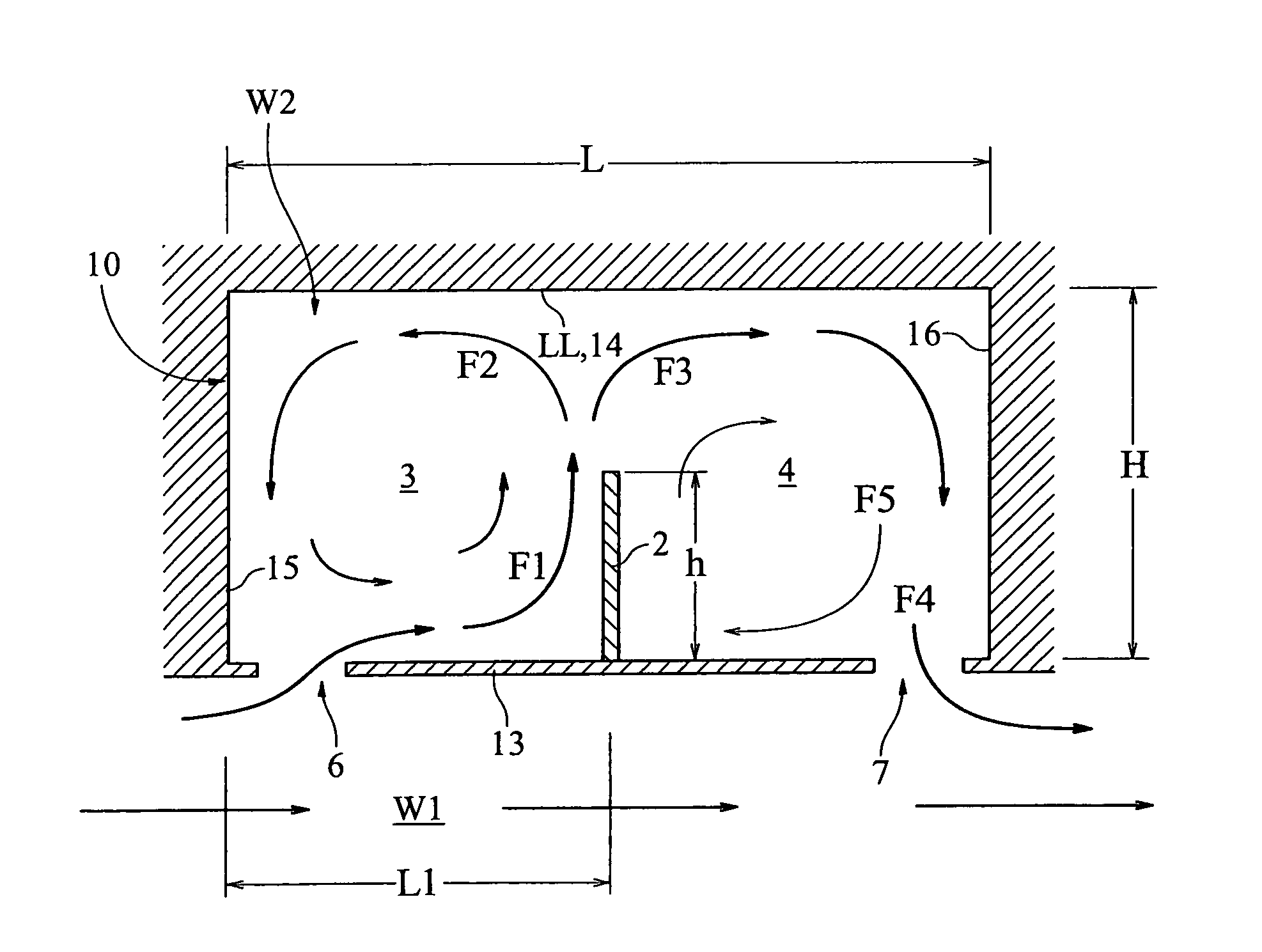Ship buoyancy control system
a buoyancy control and control system technology, applied in the field of ship buoyancy control system, can solve the problems of serious affecting the ecosystem, damage to the ecosystem, and other problems, and achieve the effect of high ballast water/seawater exchange rate and simple arrangemen
- Summary
- Abstract
- Description
- Claims
- Application Information
AI Technical Summary
Benefits of technology
Problems solved by technology
Method used
Image
Examples
example
[0078]Preferred examples of the invention will be described below in detail with reference to the accompanying drawings. FIG. 1 is a partial longitudinal cross-sectional view illustrating an example of a ship with a ballast water exchanger according to the present invention. FIG. 2 is a lateral cross-sectional view of the ship shown in FIG. 1.
[0079]A ship 1 is provided with a ballast tank 10 having a partition 2 therein. The height h of the partition 2 is lower than a water surface LL in the tank when the ship is in a lightly loaded or unloaded condition. The partition 2 extends in the widthwise direction of the hull (in the starboard-port direction). The upper end of the partition 2 is spaced apart from a top wall surface 14 by a predetermined distance. The height h is preferably set to be equal to or greater than H×0.2, where H represents the overall height of the ballast tank 10.
[0080]Since the water pressure in the tank is in balance with the water pressure outside the ship, the...
PUM
 Login to View More
Login to View More Abstract
Description
Claims
Application Information
 Login to View More
Login to View More - R&D
- Intellectual Property
- Life Sciences
- Materials
- Tech Scout
- Unparalleled Data Quality
- Higher Quality Content
- 60% Fewer Hallucinations
Browse by: Latest US Patents, China's latest patents, Technical Efficacy Thesaurus, Application Domain, Technology Topic, Popular Technical Reports.
© 2025 PatSnap. All rights reserved.Legal|Privacy policy|Modern Slavery Act Transparency Statement|Sitemap|About US| Contact US: help@patsnap.com



